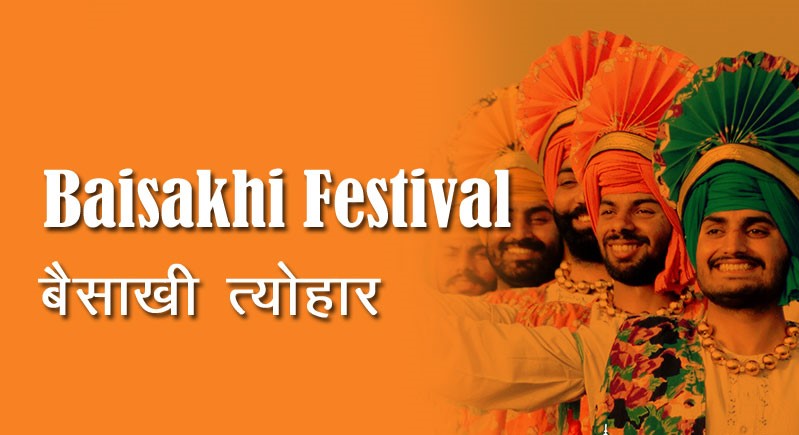Vaisakhi (Baisakhi) is a significant festival for the Hindu as well as Sikh communities and also marks the Indian Solar New Year in several regions of India. The celebration of Baisakhi Day marks the arrival of the spring season. Baisakhi is a harvest festival with cultural significance, usually occurring on 13 or 14 April, depending on whether you follow the Hindu or Sikh calendar.

Significance of Baisakhi/Vaisakhi For Sikhs/Punjabi
An important Sikh festival called Vaisakhi celebrates April 13, 1699, when Guru Gobind Singh, the tenth Sikh guru, founded the Khalsa order. The Harvest festival, Baisakhi has religious significance for Sikhs and Punjabi.
Vaisakhi has long been a harvest celebration in Punjab, a region of northern India, even before it became popular among Sikhs. In 1699, Guru Gobind Singh Ji, the tenth Sikh Guru, held the Baisakhi festival that resulted in the formation of the Khalsa Panth which is why Baisakhi or Vaisakhi is celebrated with great reverence by Sikhs. It is also known as the Sikh New Year’s celebration. In 1699, The Sikh New Year’s festival is called Baisakhi. Guru Gobind Singh chose this event in 1699 to form the Khalsa, the collective designation for Sikhs who have undergone baptism. An army was established alongside the Khalsa’s founding to fight both the Mughal Emperors and their troops as well as the social ills of society.
Baisakhi also known as Khalsa Sirjana Diwas or the birth of khalsa is celebrated as the Sikh new year. Sikhs and Punjabis celebrate Baisakhi in many ways, many of which are unique to them. On this day, there is a 48-hour Akhand walk and Bhog, and the Gurudwaras are lighted. Typically, kirtan, Kedah, prasad, and langar are used to celebrate the day. On this day, women choose to visit the Gurdwara dressed in white suits with orange dupattas.
Significance of Baisakhi for Farmers
Being a season of abundance for farmers, Baisakhi signifies that the harvest is completed and the crops are prepared for sale. Farmers express their gratitude to God for the abundant crop they received this time. Festivals and specific prayers/pujas for gratitude are common in the Hindu faith. On Baisakhi, the New Year, many Hindus and Sikhs celebrate a ritual bath in a holy river, lake or sarovar.
Also Check: List of National Holidays in Private Companies in India
Significance of Baisakhi in Hinduism, why do we celebrate it
Baisakhi which falls on April 14, is celebrated across India under a variety of names and traditions. In India, the harvest season, or Baisakhi, marks the start of the spring season. Every year, it generally occurs on April 13 or 14, and Punjab and other parts of India celebrate it with joy and fervour. This year Baisakhi festival falls on April 14, 2023.
In the Eastern, Northern, and Southern parts of India respectively, the first harvest festivals celebrated are Baisakhi, Bihu, Vishu, Poila Boishak, and Puthandu. Although the festivals and significance are the same, Hindus refer to them by several different regional names.
The first day of Baisakh/Vaisakhi is considered the traditional solar new year by Hindus in Assam, Bengal, Bihar, Himachal Pradesh, Haryana, Kerala, Odisha, Punjab, Tamil Nadu, Uttar Pradesh, Uttrakhand, and other regions of India. It is referred to as Rangoli Bihu in Assam, Poila Boisakh in West Bengal, Vaisakha in Bihar, and Puthandu in Tamil Nadu.
Baisakhi, also known as Mesha Sankranti, takes place on the first day of the solar cycle year. Mesha Sankranti is related to several regional new years, including Vishu, which is celebrated the day after Vaisakhi in Kerala, respectively.
Hindus visit the Ganga and other sacred rivers to have a ritual bath and dip on Baisakhi, the New Year, to celebrate the event, members of the Sikh community enjoy taking baths in lakes or rivers. Yet not all Hindus celebrate this new year.













